The need for a new symphonic and cantate concert hall in Brno is first mentioned in a dictionary of music by Pazdírek in 1929. Since that time this issue has come to the surface in more frequent intervals, fuelled by the existence and needs of the philharmonic orchestra, by the growth and requirements of the symphonic audience and also by the expectations of foreign visitors of Janáček’s city. There were different stages of realization of projects at Žerotínovo square (currently Bílý dům), Joliot Curie square (what is now the last section of Šumavská street with the commercial high rises), Obránců míru street (currently the ombudsman’s palace on Údolní street) and – at the turn of the 1980s and 1990s – the undeveloped area between Besední and Veselá street. The quiet struggle, which has taken place for this especially lucrative and exceptionally advantageous place for a philharmonic orchestra, has recently come to a promising outcome.
We are talking to the director of the philharmonic orchestra Marie Kučerová, who has been participating very actively in this struggle.
I would begin with the facts that I remember from my position. The construction of the 1st stage of Janáček’s culture centre was decided by Brno representatives at the end of the previous election period. The planning permission was approved, which is a necessary document for all subsequent steps, therefore this moment could be marked as decisive for the realization of construction. However, the works began much sooner. In 2004 an architectonic competition was commissioned, the winner of which was the M1 atelier from Prague. However, a ten-year period of apparent inactivity followed; of course the public was making constant requests to realize the construction. 2014 was a key year, with the commencement of the 1st stage of construction (which is, logically, the subterranean floor, i.e. garages) being decided, as well as a decision about its funding. Construction works are in progress – and certain steps, for example an archaeological survey of the location, have been made. The term for completion of the 1st stage is not only fixed, but it is also realistic – the year 2017.
What caused the Sleeping beauty up there to suddenly awake?
City council elections were held in autumn of 2014 and the promise of the construction of a dignified concert hall resonated across the entire political spectrum. At that time, a document was drawn up and signed by the leaders of all the important political parties and figures of cultural life; it clearly stated that a suitable concert hall is an absolute necessity for Brno. The winners of the election quickly put this promise into action – mayor Vokřál, or his secretary of culture Hollan, to name but a few. The fact that the project is actually prepared is also of importance. We can wish for any sort of construction, but without the necessary approval process it cannot be started; which is why I mentioned the planning permission from the start.
We have the planning permission, the works on the first stage of the project have been commenced; the underground garages will be built soon, but what about the hall?
A key step was recently made at the meeting of the Brno city council in July, at which the realization of the 2nd stage of the project, i.e. the concert hall itself, was approved, and Brněnské komunikace was authorized with the construction, which means that all further construction activities (beginning with the building permit) will efficiently follow the previous stages.
And what about the expenses which appeared on the top of the list in all considerations?
The financial coverage of the construction is secured by the city mayor. Several sources have been considered – including the involvement of a fund-raising campaign and sponsor donations.
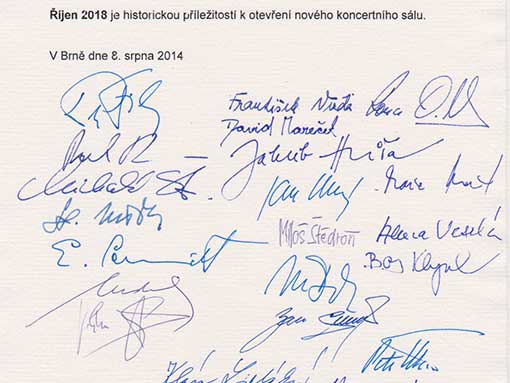 In the manifesto of the Brno city council and important figures you have talked about and which was published in the previous volume of this bulletin, it is said that the year 2018 is the ideal year for the opening of the new concert hall. To what extent is this proclamation realistic?
In the manifesto of the Brno city council and important figures you have talked about and which was published in the previous volume of this bulletin, it is said that the year 2018 is the ideal year for the opening of the new concert hall. To what extent is this proclamation realistic?
The time horizon is determined by many factors – just the project documentation itself takes a lot of time. We hope that the second stage will immediately follow the first stage and that nothing prevents the festive opening of the new hall in 2019.
The construction of Besední dům took only two years...
I believe that this schedule is realistic and we do not speak – as the generations before us – about only dreams. We have done a lot of serious work and I like the fact that the city council is approaching the construction of the hall reasonably, not only formally “in the office”. One of the important and successful steps was travelling across Europe to see new halls, or their architects and proprietors. Let us accept the fact that there is nobody in this country who truly understands the complex construction of concert halls – I mean not only in terms of construction and acoustics but also its operation. We at the philharmonic orchestra have a vision of what is necessary, but it is not easy to put it into the language of projects. That is why we decided to visit countries where they have new concert halls, and a group of people from the philharmonic orchestra, city council, architects and investors set out to study fifteen halls in detail, which also meant their technical background, and to talk to their directors and operating workers.
And did they talk to you in a marketing manner or were they honest?
They were very friendly everywhere. At first we feared that potential deficiencies would be kept secret, but they gladly showed their cards and said things like: “don’t do this”, “this is a meaningless waste of money”, or “watch out for this”. We were not talking about construction or equipment only, but also about the actual functioning of these cultural houses. Meaningful utilization is something I have been thinking over a lot now – effective operation of such large buildings is not easy. However, I was pleasantly surprised that all of these halls were full, while there was practically no advertisement throughout the cities.
People are just curious when it comes to new things...
We are talking about buildings, which are mostly larger than the one planned here, and some of them are dozens of years old – therefore the newness effect is a thing of the past, and despite this they are always full. People visit them because a musical experience in a perfect environment has become a necessity, virtually part of their lifestyle.
This shifts the concert life onto an entirely new plane...
I have been keeping this to myself, but I will say it now: the new hall is a giant leap for the audience, musicians, script editor, and marketing. It is a leap from the nineteenth century to the twenty first century with all its bits and pieces.
You have mentioned several users of the hall – and there might be some others; Do any of them have priority?
Firstly, it is necessary to clarify who will be using the hall. Seven years ago there was, among other things, a vision of a new company renting the hall to several subjects, not only to the philharmonic orchestra. The multi-functional hall was more complex in all aspects and in the end it would mean that the philharmonic orchestra would rent a hall, which would not be only a concert hall, and for this reason it would probably not be sufficient acoustically. And now put this all together with all the other issues which include schedules or the never-ending moving between Besední dům and Janáček Theatre.
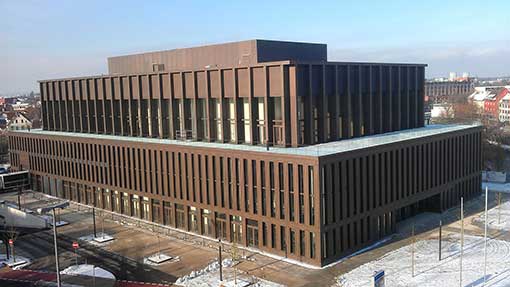 How is the issue of several different users approached elsewhere?
How is the issue of several different users approached elsewhere?
It varies according to the actual situation, which immediately led to the construction of a new hall; in a small German town of Reutlingen we met a typical multi-functional “Stadthalle”, i.e. a city hall with a flat floor suitable for holding balls. We visited houses, where several local radio stations, even television stations resided, and in some theatre plays were performed. In Brno it is different: the philharmonic orchestra rehearses in its own hall and performs concerts in a theatre – and this catastrophic difference between the too noisy acoustics of the empty hall in Besední dům, where musicians study the program, and the insufficient acoustic environment of the theatre stage, where they perform, is one of the main arguments for the construction of the new hall. All philharmonic orchestras in the world at the level of our philharmonic orchestra rehearse in the same environments where they perform in evenings.
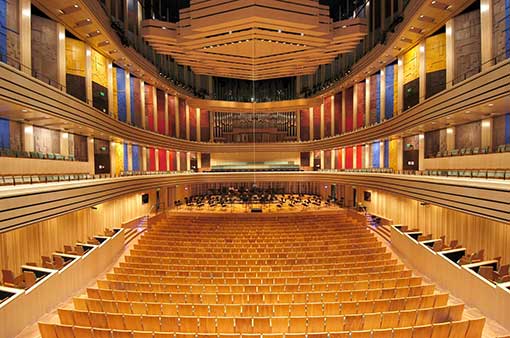 Another problem is the great difference in acoustic properties of an empty hall and a hall full of people...
Another problem is the great difference in acoustic properties of an empty hall and a hall full of people...
Yes, the minimal differences in acoustics during the rehearsal and during the concert hall-capacity audience are an important attribute of each truly modern hall; somehow they forgot about this in Budapest in the Palace of Arts for 1,700 people – there is an exceptionally long reverberation, but the most absurd fact is the necessity to cover all seats with a special fabric before each rehearsal and carefully fold it before concerts. Good acoustics in the hall require adequate seats, and not only in their shape and organization, but also the properties of the material they are covered with. The requirement is clear – an empty hall with folded seats must acoustically imitate a full hall with an audience.
Do these acoustic solutions concern only the hall as such or also other rooms?
In the new concert halls foyers are important form the point of view of acoustics so that visitors feel comfortable immediately when they enter as well as the premises for the performers which enable them to feel relaxed and focused before the performance.
And then the contact with the audience in the hall…
It is not a matter of mere acoustics but also of spatial solution. The hall, however large it may be, should enable as close a feeling of contact as possible. From the point of view of construction this is enabled via the sensitive placement of galleries (balconies) around the stage – some spectators especially choose the places where they can see the conductor from the front. Our musicians will find the fact they are encircled by the audience new – the new hall will put all of us in a new and unknown situation.
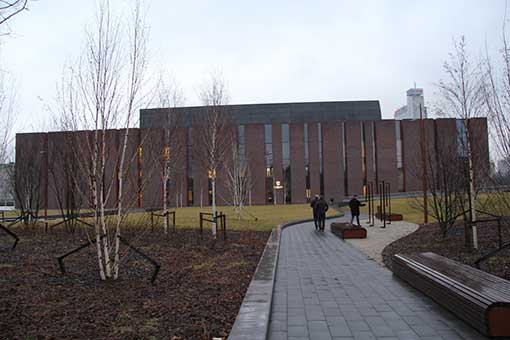 What hall capacity is designed in the project?
What hall capacity is designed in the project?
It is at least 1,200 places; we have seen interesting projects, though, which make it possible to extend this basic setting by about 300 additional places if necessary in the form of movable seats. Such an “extension” is often required if there is a star appearing as a guest. And the stars will come because even elite musicians are people who are curious and want to see a good-quality hall; not to mention, that performance under good conditions brings them greater pleasure as well as it does to the audience.
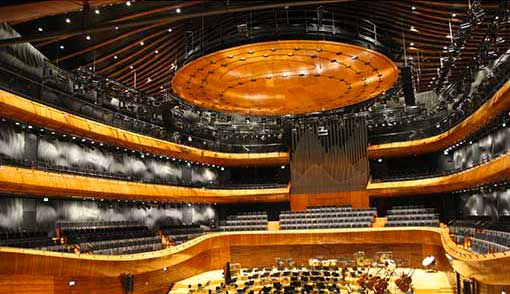 Let’s get back from the future to your travels with various professionals to see new and modern European halls; which of them did you find the most interesting?
Let’s get back from the future to your travels with various professionals to see new and modern European halls; which of them did you find the most interesting?
I would like to point out that all of them were interesting; and some negative experience inspired use even more than the positive one. For example, we have realized the disadvantage of a potentially multifunctional hall. And we clearly saw the well-known truth that ill-considered savings on investment can be unfavourably reflected in the visual aspect as well as operational costs. And the most beautiful hall? I would probably choose Katowice. We visited this place first; however, I do not think it affected our evaluation in any way – I can heartily recommend that you visit a concert of the world renowned orchestra in the town which is close not only in terms of geography! The outer shell of the building is not ostentatious – the architect included the building modestly into the landscape (in the view range of the mining towers) near the city centre; the hall is for an audience of 1,700 people. We visited a concert (Berg’s violin concert, Shubert’s Unfinished conducted by Liebreich), which was breathtaking. The capacity was full, recorded and at the same time directly broadcasted in Germany. An unforgettable experience! The hall is a shoe box type (I will return to hall types later), slightly curved, optically made of wood with added stone.
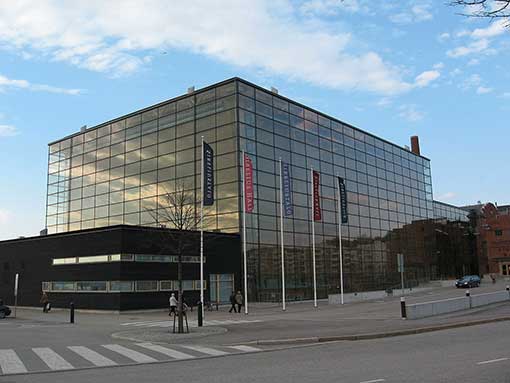 Its capacity is, however, too large for Brno…
Its capacity is, however, too large for Brno…
And therefore I would like to mention the Finnish wood-working town of Lahti, which we visited as the last one – however, it might be a top candidate on our evaluation list. When speaking about our evaluation, I mean not only the sense of beauty, but also practical views from the perspective of the Brno philharmonic, our visitors as well as the needs of the city and tourists. The Finnish hall for an audience of 1,200 people is also ashoe box type and it is panelled with wood. It has been operational for ten years already including the radio (the Lahti radio station is one of the oldest in Europe) and strangely I felt that it was small, but it is the size we consider realistic for Brno; it gave a very positive feeling, I would even say pleasant, intimate. The connection of the building with part of the former woodworking factory, which is a memorial nowadays, is interesting. This reminds me of our situation, where the new hall will be directly connected to the historical building of Besední dům.
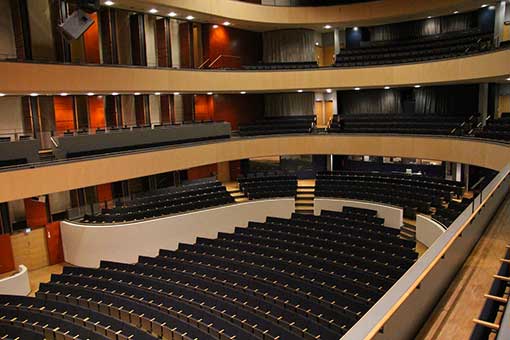 You promised to explain various hall types…
You promised to explain various hall types…
During our journey to see European concert halls we actually came across two types: shoe box is the older – typical originally rectangular prism like the one in the Besední dům and which is also being considered for the project of the new Brno hall; I am glad that we reached the decision that this hall type is acoustically more suitable than the so called vineyard, i.e. excessively branching hall full of various hanging galleries, which provide a great experience, but which may be problematic acoustically.
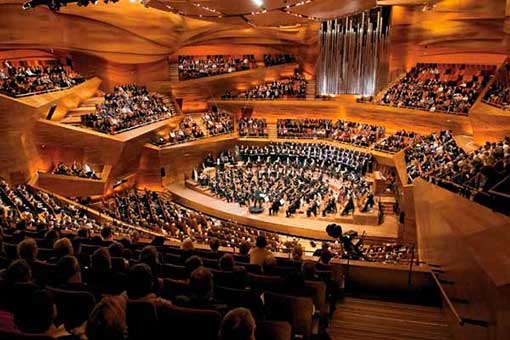 And now let’s talk about the experience from the individual construction stages, which currently started in Brno.
And now let’s talk about the experience from the individual construction stages, which currently started in Brno.
1st stage between Veselá and Besední streets will be shielded from various vibrations generated by, for example, traffic and they will make absolute silence possible in the hall; that is something, which is not present in the current Brno environment, and which we probably cannot even imagine. The necessity to gradually separate the undesirable noise not only while listening to music burdens our organism.
Let us focus on the concert hall equipment from the dramaturgy perspective; as it is significantly limited by the current capabilities of Brno – for example, will there be an organ in the hall?
Yes, the requirement for a dignified performance of Janáček’s Glagolitic Mass is absolutely crucial. The hall will be suitable for the entire classical repertoire including choirs and even more recent pieces will undoubtedly shine there. For the sound system requirements for some concerts, various methods of placement and adjustment of reproduction equipment will be at disposal. From the perspective of the hall operation, it will also be important to use the capacity and utilize it for various conferences or meetings where speeches will be held. A crucial benefit for the orchestra (and also for soloists and conductors) is the fact that rehearsals will take place at the same location as the concert; the regular moving of instruments will therefore be limited. The musicians will have their dressing rooms, individual rehearsal rooms and music archive in the new building. The narrowest place of the Brno philharmonic will probably be the several metres long glass connection between the new building and Besední dům above the Besední street. This passage will be used to transport instruments, and even concert musicians will eventually be able to use this passageway to get to the Besední dům hall. If I may return to the previously asked question, how the new hall influences the dramaturgy of the philharmonic: in all aspects as well as in the simple human one – for example the script editor will no longer be forced to study the new materials in a single room with other operational and administrative workers.
And what will the new building operation look like from the visitors’perspective?
The change there should be absolutely crucial, for Brno inhabitants as well as for tourists who visit Brno. We do not consider the philharmonic orchestra building a closed area, the ticket pre-order booth will be placed there, and a retail shop of our CDs as well as promotional items, a restaurant and bistro – and a parlour for workshops, all-day minor activities and events related to music, which are popular options of interactive encounters abroad, discussions, … I already have several ideas I would like to share in the next interview.
And here is the list of the countries and towns they visited in case you are interested:
Poland: Katowice, Wroclaw, Szczecin, Hungary: Pécs, Budapest,
Denmark: Copenhagen, Aalborg, Norway: Stavanger, Kristiansand, Germany: Essen, Reutlingen,
Great Britain: Newcastle, Birmingham, Finland: Helsinky, Lahti, (Czech Republic: Zlín)




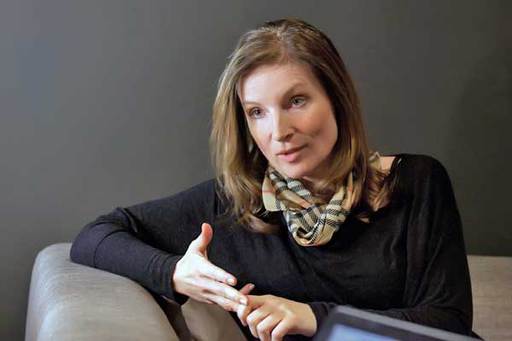

























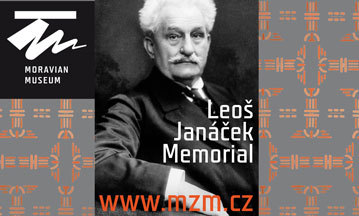

No comment added yet..